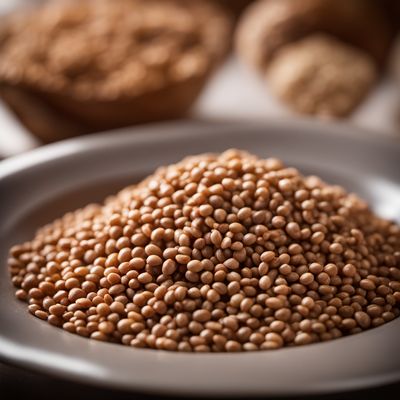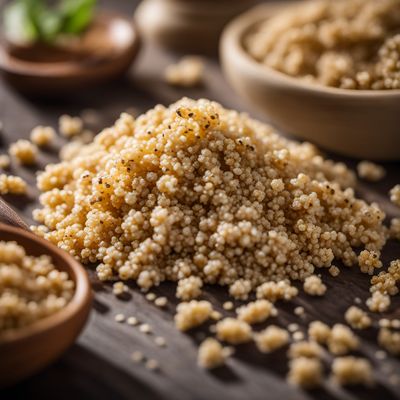
Ingredient
Kaniwa grain
The Mighty Kaniwa: A Nutritional Powerhouse
Kaniwa grain, also known as baby quinoa, is a tiny seed that resembles quinoa but boasts a nuttier flavor and crunchier texture. It is rich in protein, fiber, and essential minerals like iron and calcium. Its small size and quick cooking time make it a convenient choice for salads, pilafs, and porridges.
Origins and history
Kaniwa grain originates from the Andean region of South America, where it has been cultivated for centuries by indigenous communities. It holds cultural significance and has been a staple food in the region. Today, it is gaining popularity worldwide due to its exceptional nutritional profile and versatility in culinary applications.
Nutritional information
Kaniwa grain is a nutritional powerhouse, providing a good source of protein, fiber, iron, and calcium. It is also gluten-free and low in calories, making it an excellent choice for individuals with dietary restrictions or those seeking a healthy alternative.
Allergens
Kaniwa grain is naturally gluten-free, making it suitable for individuals with gluten sensitivities or celiac disease. However, cross-contamination may occur during processing, so it is essential to check for certified gluten-free labels if necessary.
How to select
When selecting kaniwa grain, look for packages that are tightly sealed and free from moisture or signs of insect damage. Opt for organic varieties whenever possible to ensure the absence of pesticides or chemicals. Additionally, choose grains that have a vibrant color and a fresh, nutty aroma.
Storage recommendations
To maintain the freshness and quality of kaniwa grain, store it in an airtight container in a cool, dry place, away from direct sunlight. Properly stored, it can last for up to one year. Avoid storing it near strong-smelling ingredients as it can absorb odors easily.
How to produce
Kaniwa grain can be grown in a similar manner to quinoa. It thrives in well-drained soil and requires full sun exposure. Sow the seeds directly in the garden or in containers, ensuring a spacing of about 6 inches between plants. Regular watering and occasional weeding are necessary for optimal growth.
Preparation tips
Before cooking kaniwa grain, rinse it thoroughly under cold water to remove any residual bitterness. Use a fine-mesh sieve to ensure no grains are lost. To cook, combine one part kaniwa grain with two parts water or broth in a saucepan. Bring to a boil, then reduce the heat and simmer for about 15-20 minutes until the grains are tender and the water is absorbed. Fluff with a fork before serving. Kaniwa grain can be used as a base for salads, added to soups, stews, or enjoyed as a side dish.
Substitutions
Quinoa can be used as a substitute for kaniwa grain, as they share a similar taste and texture. Amaranth seeds can also be used as a substitute, although they have a slightly different flavor profile. If a gluten-free option is not necessary, couscous or bulgur can be used as alternatives.
Culinary uses
Kaniwa grain is a versatile ingredient that can be used in a variety of culinary applications. It can be added to salads, pilafs, soups, stews, or used as a side dish. It pairs well with vegetables, herbs, and spices, allowing for endless flavor combinations. Additionally, kaniwa grain can be ground into flour and used in baking recipes such as bread, muffins, or pancakes.
Availability
Kaniwa grain is commonly available in health food stores, specialty grocery stores, and online retailers. It is cultivated in countries like Peru, Bolivia, and Ecuador, where it is a traditional crop. Its popularity is gradually increasing, and it can now be found in various regions around the world.



